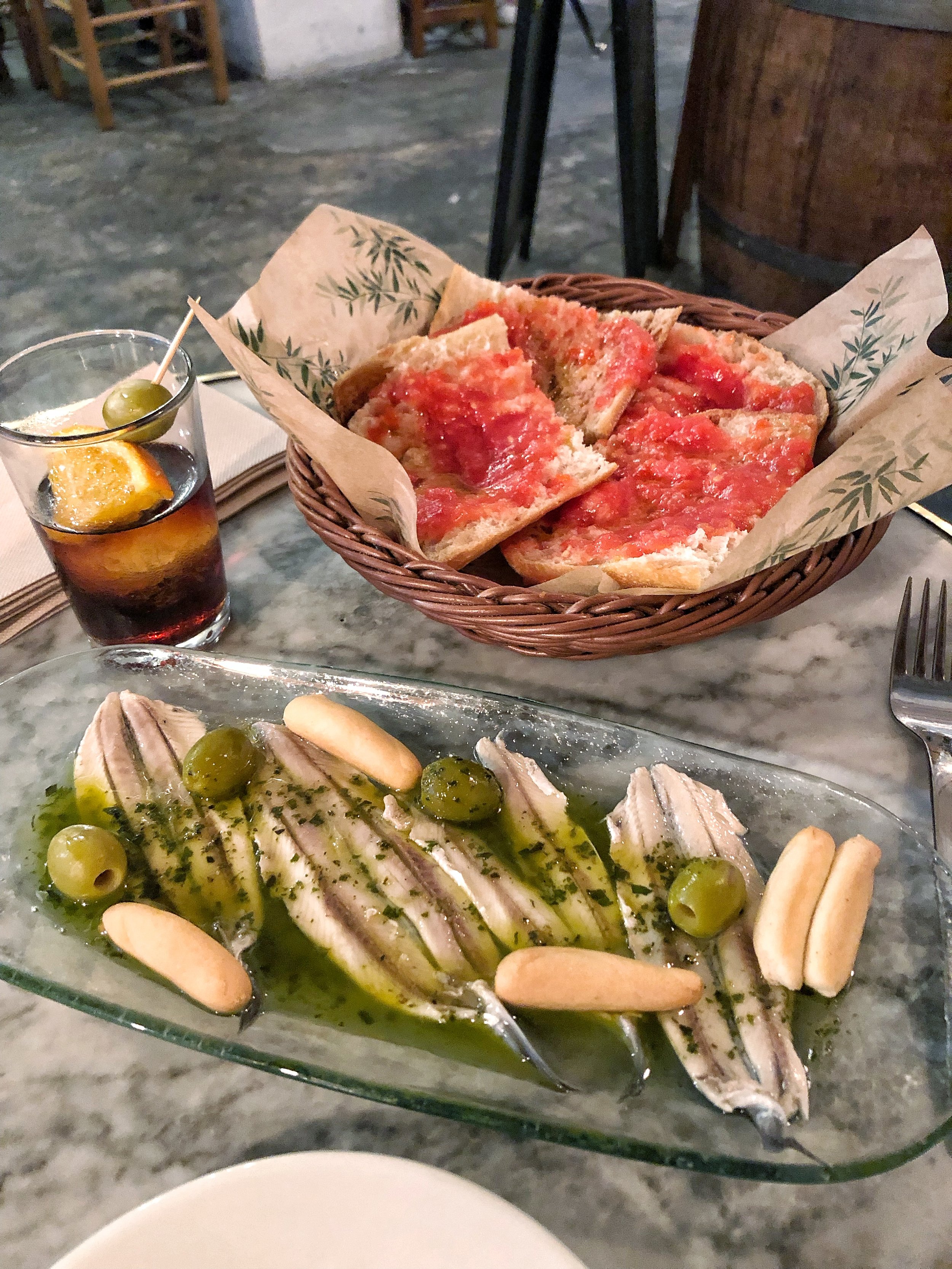Human beings were designed to be flexible around food.
Hello! It’s been a bit quiet around here, as I’ve been taking a break from writing while I was on vacation the best couple weeks. Me and my husband spent a week in Provence with my dad and stepmom, then took a train down to Barcelona for four more days on our own. We’ve been to France a couple times in recent years, first to the Dordogne and then the Loire River Valley, Normandy, and Paris for Christmas, but I had never been to Barcelona and last visited Spain when I was in high school, so it was very new and exciting.
If you’re planning on ever going to Barcelona, let me just say, the food lives up to the hype. As someone who likes to taste all of the things, tapas culture is my kind of eating. After the museums and sites had closed down at the end of the day, the hubs and I would stop by a vermuteria for a glass of vermut (this needs to become a thing in the states), then once it hit 8, hit up a couple different restaurants for tapas. Even eating at 8 pm, we were always the first people there - we felt quite geriatric!
Boquerones with tomato bread dripping with olive oil and a glass of vermut
Fabada, a stew of giant beans with pork and sausage
Brie-like cheese topped with creamy artichokes, tomato tapenade and caviar, and loquats topped with cheese, tapenade and anchovies
A couple days after I got back, I got a message over instagram asking about eating after 8 pm. I actually laughed out loud, because I had literally not eaten a single meal before 8 pm in over 2 weeks. The question made me think about how for every diet rule, there’s a culture whose dietary practices blow that diet rule apart.
“Don’t eat after 8, or you’ll gain weight,” but the entire country of Spain hardly thinks about dinner till after 9.
Refined grains, like white rice and white pasta, get blamed for a litany of health problems, but if that were true, Japan and Italy would be in the midst of a health crisis.
Supposedly we should be eating only lean meat, but I don’t think I’ve seen a single boneless, skinless chicken breast in any of my trips to France.
Carbs cause diabetes…except in areas of Mexico that eat a traditional diet based on starchy squash, corn, and beans, and have some of the lowest rates of diabetes in the world.
“Only baby cows should drink milk,” but in Nordic and eastern European countries, milk, cheese and yogurt are eaten/drunk with basically every meal.
Vegan diets are the healthiest diets, unless you’re Masai and eat a traditional diet that’s almost entirely meat. High protein, low carb diets are the healthiest, unless you’re Bantu and eat a traditional diet that’s almost entirely vegetables and beans.
When you look at eating practices and traditions around the world, one thing is clear: human beings were designed to be flexible around food. We have survived by being able to adapt our diet to whatever food is available in a wide variety of environments. I can’t imagine early humans doing very well as a species if they were preoccupied with staring a the sun, trying to adapt their eating to some arbitrary intermittent fasting schedule, or passing on some foraged berries because they were too high in sugar.
Pandas have adapted to thrive on a diet that consists mostly of bamboo.
Hyenas have adapted to thrive on scavenged meat, skin and bones.
Baleen whales have adapted to thrive on a diet of krill, plankton, shrimp, small fish, and whatever else gets stuck in their comb-like mouth.
Honeybees have adapted to thrive on nectar from flowers.
Elephants have adapted to thrive on grasses, leaves, tree bark and roots, and have a long trunk that helps them do that.
Human beings have adapted to eating a wide variety of eating patterns based on what food is available (but typically includes foods that provide fat, protein and carbohydrate), and eating in a social environment, connecting with other human beings.
If you enjoyed this post on how human beings were designed to be flexible around food, follow my intuitive eating Pinterest board for more inspiration.








